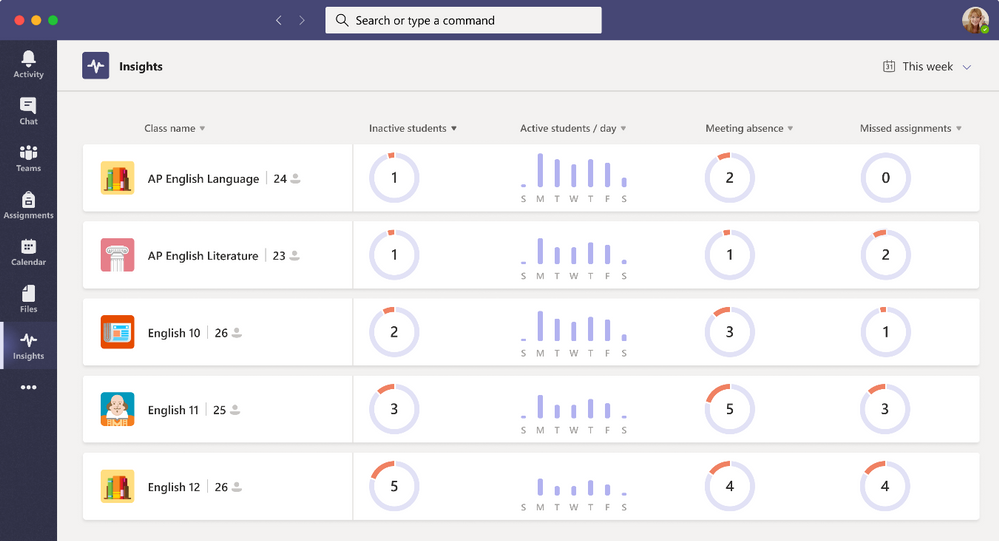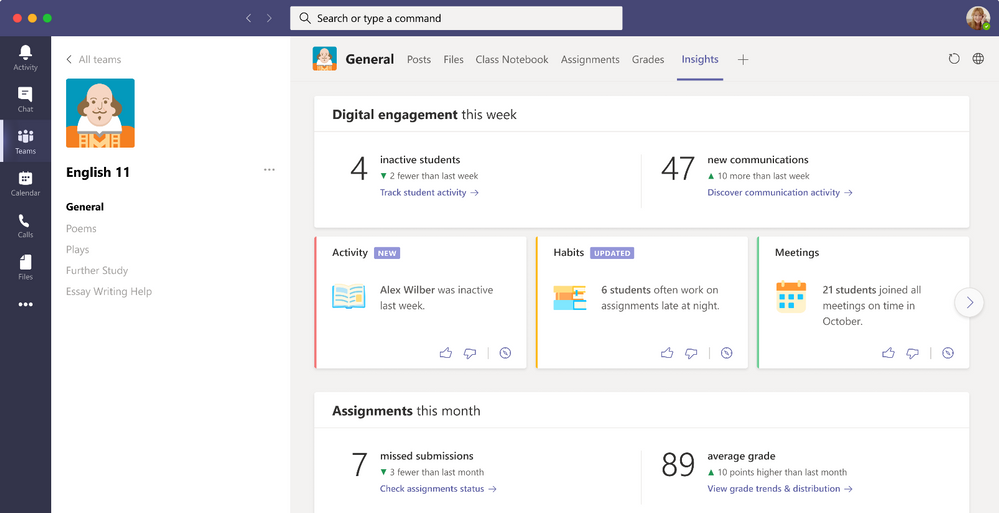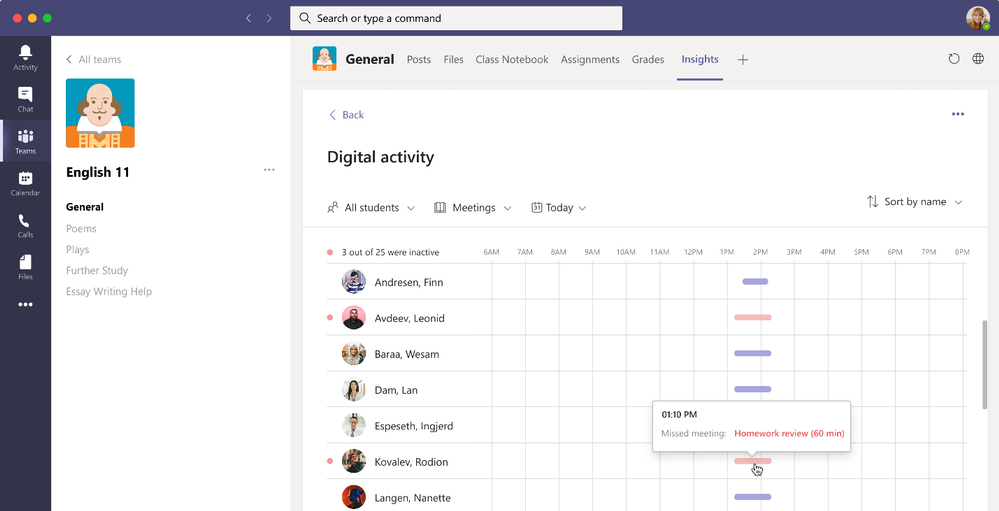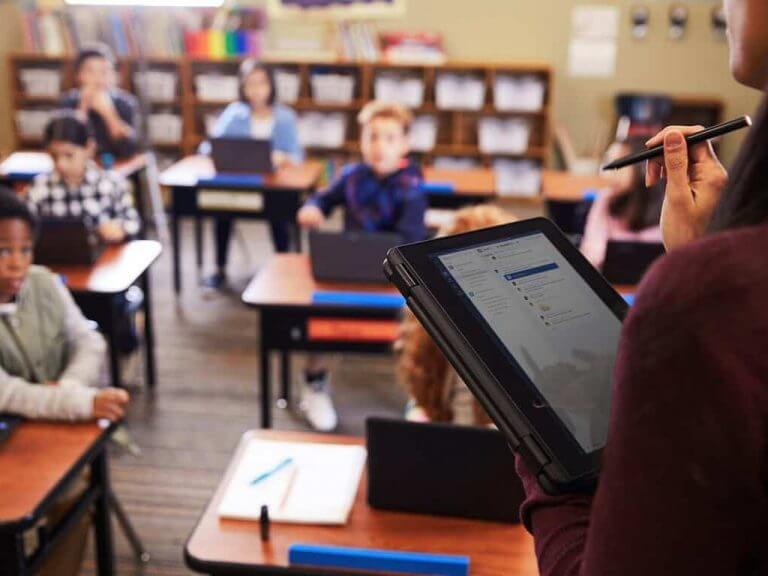With the COVID-19 pandemic still raging on, schools are once again (or in some cases still) depending on remote learning. When compared to traditional learning, there are obvious downsides to it, and one of these is student engagement. Sometimes, students might not really feel as immersed with the content you’re sharing, but Teams can help out. Here’s a look at how you can boost your engagement within Teams.
Tip 1: Use insights in Teams

Part of the problem with remote learning is that you’re not always able to “see” your student’s reactions to your lectures during specific classes. Sometimes, some classes could be more “fun,” or more engaging than others. Usually, you can do this by judging the room, or the language of students in real life, or the attendance of a class. Well, did you know that Teams makes that easy for you virtually with the Insights app?
To use Insights in Teams, you just need to add the app to Teams by clicking here. Then, when in Teams, click the . . . more menu and choose insights. Once added, you can pin the app, and click it to open it. You’ll be able to see some statistics for each of your classes. These include inactive students, active students per day, meeting absentees, and how many missed assignments there were in a specific class. There even will be some specific insights about how a class is doing. You’ll be able to see things like student activity, grades, meetings, communications, missed submissions, too. As a teacher, this will all help you find which class needs more of your attention.
Tip 2: Dive deeper into student behavior

Another problem with remote learning is that you’re not able to see a student’s behavior during classes. In real learning, you can tell who shows up early, who shows up late, who is on time, and who is working on a specific assignment at any time. Well, Teams can help with that, too.
As part of the previously mentioned Teams insights, you can check out the spotlight cards. These cards can show classroom activities that you might have otherwise missed. You’ll be able to peek at student behavior. For instance, you can see how many students were absent on a given week for a meeting, and if a student is working earlier or later than usual. You can even thumbs up the card to see more of those, or hover over the bold text or number to see more student’s name. There’s even a feature that lets you see the filtered digital activity report, for that behavior, too.
Tip 3: Check out student activity and class behaviors

Third on our list are some obvious issues of concern. As a teacher, you’ll likely want to see your student’s overall activity and class behaviors. This helps you decide how to plan your lessons, and how to adapt the curriculum to fit student needs. Well, again, thanks to insights, Teams is here to help.
First off, you can see how a student is using Teams for their classes or courses by clicking on a classes’ inactive students from the left-hand rail in the insights app. You also can click track student activity from the main page, too, as well. This will take you to the digital activity view. Where you can see how a student opened a file, how many posts they made, and how many reactions they gave.
In addition, you can also dive deeper into your class’s overall behavior, too. This is known as synchronous behavior. To do this, visit the Insights Tab, and then go to the Digital Activity report. Then, click All Activities and then Meetings. From there, you can select a specific student or a time frame. Just hover over the bars to see a peek at the student behavior. Microsoft color-coded things for you. If you see a red bar, that student missed a meeting. If you see a red dot next to the name, meanwhile, that means they were not active during the time of the meeting.
Other tips!
These are just some tips on how you can get the most out of Teams and help boost your engagement in the online classroom. Of course, there are many other ways, too. You can try using Together Mode, which puts your students in a virtual auditorium, and you can also check out the Microsoft Educator Center for more, too. Microsoft has lots of tools, and is here to help!


